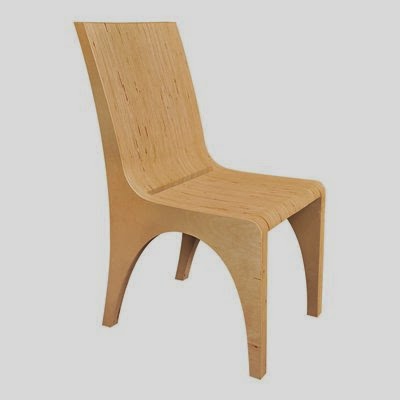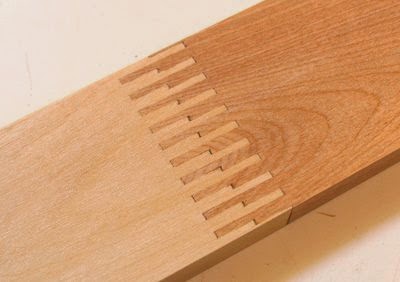Sizing and Ergonomics
Dimensions:
Height: 14"
Depth: 18.5"
Length: 60"
The bench will be designed to fit desired human comfort. The slanted inward legs will assure "top notch" stability. We will be using hard wood instead of plywood for the legs because the plywood isn't strong enough for the bench.
http://www.youareelectric.com/2013/05/13/vintage-diy-instructions-for-building-your-own-nelson-slat-bench-in-7-steps-for-3-50/
http://eastcoastcreativeblog.com/2014/03/nelson-bench-knock-tutorial.html
http://www.manmadediy.com/users/chris/posts/1383-how-to-make-a-diy-george-nelson-inspired-outdoor-slat-bench
Joints
For the top of the bench the slats will be held together with finger joints at three spots on the bench. At both ends and the middle of the bench. The legs will be held together with bridle joints. This or splicing it together would work the best.
http://www.newwoodworker.com/basic/bridlejnt.html
http://www.woodworkbasics.com/butt-joint.html
http://www.instructables.com/id/Box-finger-joint-jig/
Processes of Furniture Layout and Assembly Construction
When we start cutting our slats the spaces in between them will be equivalent throughout the entire bench. The legs will be cut on certain angles so the joints will fit perfectly and hold nicely. There may be a problem making the finger joints work but we will use a jig to make sure the joints are all price and assure fitting. The jig will be used on the table saw when we are cutting the hardwood.
Fabrication and design Portfolio: Eddie Vorvolakos
Thursday, May 8, 2014
Monday, April 28, 2014
Plywoof Furniture Case Studies(best)
This is awesome because the complexity behind this is very amazing. It looks so simple but has so much more into it. It could be made by using a lot of materials.
This is awesome because it is a very sleek looking piece of furniture. It could easily be made with plywood.
This is awesome because this is a nice chair that can easily be made from plywood.
Monday, March 17, 2014
The mortise and tenon joint has been used for thousands of years by woodworkers around the world to join pieces of wood, mainly when the adjoining pieces connect at an angle of 90°. In its basic form it is both simple and strong. Although there are many joint variations, the basic mortise and tenon comprises two components: the mortise hole and the tenon tongue. The tenon, formed on the end of a member generally referred to as a rail, is inserted into a square or rectangular hole cut into the corresponding member. The tenon is cut to fit the mortise hole exactly and usually has shoulders that seat when the joint fully enters the mortise hole. The joint may be glued, pinned, or wedged to lock it in place.
Tongue and groove is a method of fitting similar objects together, edge to edge, used mainly with wood, in flooring, parquetry, panelling, and similar constructions. Tongue and groove joints allow two flat pieces to be joined strongly together to make a single flat surface. Before plywood became common, tongue and groove boards were also used for sheathing buildings and to construct concrete formwork.
Each piece has a slot (the groove) cut all along one edge, and a thin, deep ridge (the tongue) on the opposite edge. The tongue projects a little less than the depth of the groove. Two or more pieces thus fit together closely. The joint is not normally glued, as shrinkage would then pull the tongue off.
Plywood may also be tongued all round to fit it flush into a framed structure, and plywood for sub-floors used in platform framing is often supplied with tongue and groove edges.
When joining thicker materials, several tongue and groove joints may be used one above the other.
Tools: Miter saw, Rip saw, jigsaw.
A finger joint is a woodworking joint made by cutting a set of complementary rectangular cuts in two pieces of wood, which are then glued. To visualize a finger joint simply interlock the fingers of your hands at a ninety degree angle; hence the name "finger joint." It is stronger than a butt or lap joint, and often contributes to the aesthetics of the piece.
Alternate names include box-pin joint or box joint. The finger joint is the most common joint used to form long pieces of lumber from solid boards; the result is finger-jointed lumber. The finger joint can also be invaluable when fixing tables and chairs and also can be used in such things as floor boards, timber roof and door construction. This is also used in design technology for students. Finger joints can be hard to make without the right tools.
Tools: Router and Table Saw
Tongue and Groove: A strong joint, the tongue and groove joint is widely used for re-entrant angles.Tongue and groove is a method of fitting similar objects together, edge to edge, used mainly with wood, in flooring, parquetry, panelling, and similar constructions. Tongue and groove joints allow two flat pieces to be joined strongly together to make a single flat surface. Before plywood became common, tongue and groove boards were also used for sheathing buildings and to construct concrete formwork.
Each piece has a slot (the groove) cut all along one edge, and a thin, deep ridge (the tongue) on the opposite edge. The tongue projects a little less than the depth of the groove. Two or more pieces thus fit together closely. The joint is not normally glued, as shrinkage would then pull the tongue off.
Plywood may also be tongued all round to fit it flush into a framed structure, and plywood for sub-floors used in platform framing is often supplied with tongue and groove edges.
When joining thicker materials, several tongue and groove joints may be used one above the other.
Tools: Miter saw, Rip saw, jigsaw.
Alternate names include box-pin joint or box joint. The finger joint is the most common joint used to form long pieces of lumber from solid boards; the result is finger-jointed lumber. The finger joint can also be invaluable when fixing tables and chairs and also can be used in such things as floor boards, timber roof and door construction. This is also used in design technology for students. Finger joints can be hard to make without the right tools.
Tools: Router and Table Saw
Wednesday, October 23, 2013
A Great Toy to Build: Cup and Ball Toss
The cup and ball toss game took back to ancient Greece. MAny children and adults played the cup and ball toss game in Colonial America and the game remained popular during the 19th century.The toy measures 6 inches in overall length, is made from hardwood, and has a braided nylon cord. It is such a simple game but it is genius. Extremely entertaining for the youth even still today.
Subscribe to:
Comments (Atom)





























